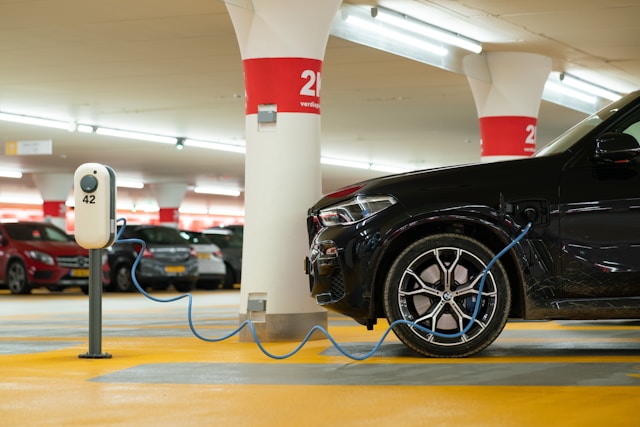The shift towards electric vehicles (EVs) marks a significant milestone in the history of transportation. A century ago, the roar of gasoline engines overtook the streets, signaling the dawn of a new era. Today, a similar transformation is underway, but this time, it’s silent, powered by electrons rather than explosions. Electric vehicles represent not just an alternative to their fossil-fueled predecessors but a fundamental change in how we view mobility. This shift is driven by a growing awareness of environmental issues, advances in battery technology, and a global push toward reducing carbon emissions.
Despite the clear environmental benefits, the transition to electric vehicles presents unique challenges. One of the most significant is range anxiety, the fear that an EV will run out of power before reaching its destination. This fear is rooted in the current limitations of EV technology and infrastructure. While advancements in battery capacity and efficiency have been remarkable, they cannot alone overcome the psychological barrier that range anxiety represents. This challenge underscores the need for a robust, reliable, and accessible charging infrastructure.
A critical aspect of this transition is the integration of renewable energy sources. The environmental impact of EVs is not just about the emissions they don’t produce; it’s also about how the electricity that powers them is generated. For EVs to truly contribute to a reduction in global carbon emissions, the electricity they use must come from renewable sources. Solar, wind, and hydroelectric power offer promising pathways to ensure that the growth of electric vehicles is accompanied by a corresponding increase in green energy production.
Building a Robust EV Charging Network
Developing a comprehensive EV charging infrastructure is akin to laying the foundation for the future of transportation. The current landscape of EV charging stations is a patchwork, with significant disparities in availability between urban and rural areas. In cities, the proliferation of public charging stations is on the rise, driven by both governmental initiatives and private investments. However, the rural landscape tells a different story, where the scarcity of charging options creates a significant barrier to EV adoption.
This urban-rural divide in EV charging infrastructure not only affects potential EV buyers but also reflects broader socioeconomic disparities. In urban centers, where the density of population and vehicles is high, the business case for investing in charging infrastructure is clear. However, in rural areas, where distances are greater and populations sparser, the return on investment for charging stations is less certain. This disparity poses a significant challenge for policymakers and industry leaders who are tasked with ensuring equitable access to EV infrastructure.
The role of public policy and private enterprise in developing EV charging infrastructure cannot be overstated. Government initiatives, such as subsidies and mandates, play a pivotal role in incentivizing the construction of charging stations. Similarly, private enterprises, driven by the potential for future profits and environmental commitments, are increasingly investing in the development of charging infrastructure. This partnership between the public and private sectors is crucial for creating a network that is both extensive and efficient.
In the landscape of EV charging solutions, ChargeTronix emerges as a significant player. As a premier manufacturer and distributor of EV chargers in North and Latin America, their approach offers insights into the future of EV infrastructure. ChargeTronix’s products stand out for their modular, robust design and functional versatility. With the ability to energize multiple dispensers through power cabinets, they demonstrate an innovative approach to charging networks.
Enhancing User Experience in EV Charging
The user experience in EV charging extends beyond the mere act of powering a vehicle. It encompasses the ease of locating a charging station, the speed of charging, and the simplicity of the transaction. Modern EV drivers expect an experience that mirrors the convenience of traditional fueling stations, if not surpasses it. This expectation sets a high bar for innovation in the field of EV charging.
The integration of digital technology into EV charging is revolutionizing the user experience. Mobile applications that allow users to locate nearby charging stations, reserve slots, and even track their charging progress are becoming standard. These apps are not just tools for convenience but also platforms for community engagement, where users can share reviews and tips. This digital layer adds a social dimension to EV charging, transforming it from a solitary task to a connected experience.
The payment process for EV charging is another area ripe for innovation. The traditional model of paying per charge is evolving, with subscription models and membership programs emerging as alternatives. These new models offer not just convenience but also cost predictability, which is particularly appealing to frequent EV users. As the EV market grows, expect to see more creative pricing strategies designed to attract and retain customers.
The Cutting Edge of EV Charging Technology
The technological advancements in EV charging infrastructure signal a future where charging is not just faster but also more integrated into our daily lives. One of the most promising developments is the advent of ultra-fast charging technology. These chargers, capable of delivering a significant charge in just minutes, are set to revolutionize the market. They promise to make long trips in EVs as convenient as those in gasoline vehicles, effectively eliminating range anxiety.
Wireless charging represents another frontier in EV technology. Imagine pulling into a parking spot and having your vehicle automatically start charging, with no need for cables or plugs. This technology, still in its nascent stages, has the potential to dramatically streamline the EV charging process. It also opens up new possibilities for integrating charging infrastructure into urban landscapes, such as embedding charging coils in parking spaces and roads.
Solar-powered charging stations are an example of how the EV industry is aligning with broader environmental goals. These stations, which harness the power of the sun to charge vehicles, exemplify the synergy between renewable energy and electric mobility. By reducing the reliance on grid electricity, which may still be partially generated from fossil fuels, solar-powered stations help ensure that the environmental impact of EVs is minimized.
Economic Impacts and Opportunities
The economic implications of a growing EV charging infrastructure are vast and multifaceted. For one, the construction and maintenance of charging stations create new jobs, from engineering and manufacturing to installation and servicing. This employment growth extends across a range of skill levels, offering opportunities both to highly skilled workers and to those with less specialized training.
The proliferation of EV charging stations also has the potential to stimulate local economies. Charging stations can increase foot traffic to nearby businesses, as EV drivers wait for their vehicles to charge. This dynamic offers a unique opportunity for the retail and hospitality sectors, particularly in areas where charging stations are sparse.
Investments in EV charging infrastructure are not just about creating immediate economic benefits; they also represent a commitment to a sustainable future. Governments and private investors who fund charging infrastructure are laying the groundwork for the long-term growth of the EV market. This investment signals confidence in the future of electric mobility, which in turn drives further innovation and development in the sector.
Charting a Sustainable Path Forward
As we envision the future of transportation, it’s clear that electric vehicles and their supporting infrastructure will play a pivotal role. The transition to electric mobility is not just a technological shift but a cultural one, requiring changes in how we think about and interact with our vehicles. The development of a robust, accessible, and innovative EV charging infrastructure is critical to this transition.
The road ahead is both exciting and challenging. It demands continued innovation, not just in technology but also in policy, economics, and user experience. The collaborative efforts of governments, businesses, and consumers will be crucial in navigating this terrain. By working together, we can ensure that the future of transportation is not only electric but also sustainable, efficient, and inclusive.
Finally, the evolution of EV charging infrastructure is more than just a technical endeavor; it’s a journey towards a more sustainable and connected world. Each advancement in this field brings us closer to a future where electric mobility is the norm, not the exception. As we continue to innovate and expand our charging networks, we’re not just powering vehicles; we’re fueling the future.







